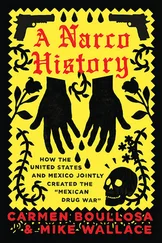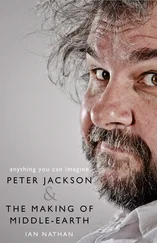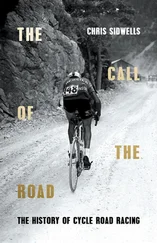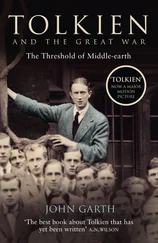That, then, is their association with rabbits. One can see why Tolkien denied the obvious connection between the two: he did not want hobbits classified as small, furry creatures, vaguely ‘cute’ just as fairies were vaguely ‘pretty’. On the other hand both insinuated themselves, rabbits into the homely company of fox and goose and hen, hobbits into the fantastic but equally verbally authenticated set of elves and dwarves and orcs and ettens. One might go so far as to say that the absence of rabbits from ancient legend made them not an ‘asterisk word’ but an ‘asterisk thing’ – maybe they were there but nobody noticed. That is exactly the ecological niche Tolkien selected for hobbits, ‘an unobtrusive but very ancient people’ ( LOTR p. 1, my italics). It is not likely that this role was devised for them before the arrival of the inspired ‘In a hole in the ground there lived a hobbit’, any more than the etymology from holbytla. Still, the amazing thing about that sentence, looking back, is the readiness with which it responded to development. The first half of it helped to anchor hobbits in history, via holbytlan , the second to characterise them in fiction, via the anachronisms associated with the rabbit-analogy. Such complexity could be the result of prior unconscious cogitation or later artistic effort. Either way, ‘hobbit’ as word and concept threw out its anchors into Old and modern English at once: ‘grammarye’ at work once more.
This preamble makes it easier to say what Tolkien was doing in The Hobbit. Like Walter Scott or William Morris before him, he felt the perilous charm of the archaic world of the North, recovered from bits and scraps by generations of inquiry. He wanted to tell a story about it simply, one feels, because there were hardly any complete ones left; Beowulf or The Saga of King Heidrek stimulated the imagination but did not satisfy it. Accordingly he created a sort of ‘asterisk-world’ for the Norse Elder Edda. The dwarf-names of ‘Thorin and Company’, as well as Gandalf’s, come from a section of the Eddic poem Völuspá, often known as the Dvergatal or ‘Dwarves’ Roster’. This is not much regarded now, and has been called a ‘rigmarole’, a meaningless list; The Hobbit implies, though, that that meaningless list is the last faded memento of something once great and important, an Odyssey of the dwarves. As for the landscape through which Gandalf, Thorin and the rest move, that too is an Eddic one; ‘the pathless Mirkwood’ is mentioned in several poems, while ‘the Misty Mountains’ come from the poem Skirnismál, where Freyr’s page, sent to abduct the giant’s daughter, says grimly to his horse:
‘Myrct er úti, mál qveð ec ocr fara
úrig fiöll yfir
þyrsa þióð yfir;
báðir við komomc, eða ocr báða tecr
sá inn ámátki iötunn.’
‘The mirk is outside, I call it our business to fare over the misty mountains, over the tribes of orcs (þyrs = orc, see note above); we will both come back, or else he will take us both, he the mighty giant.’
All that Tolkien has done, in a way, is to make place-names out of adjectives, to turn words into things. But there is one very evident obstacle to recreating the ancient world of heroic legend for modern readers, and that lies in the nature of heroes. These are not acceptable any more, and tend very strongly to be treated with irony: the modern view of Beowulf is John Gardner’s novel Grendel (1971). Tolkien did not want to be ironic about heroes, and yet he could not eliminate modern reactions. His response to the difficulty is Bilbo Baggins, the hobbit, the anachronism, a character whose initial role at least is very strongly that of mediator. He represents and often voices modern opinions, modern incapacities: he has no impulses towards revenge or self-conscious heroism, cannot ‘hoot twice like a barn-owl and once like a screech-owl’ as the dwarves suggest, knows almost nothing about Wilderland and cannot even skin a rabbit, being used to having his meat ‘delivered by the butcher all ready to cook’. Yet he has a place in the ancient world too, and there is a hint that (just like us) all his efforts cannot keep him entirely separate from the past.
His name, thus, is Baggins, and he lives in Bag End. This latter name had personal and homely associations for Tolkien (see Biography , p. 234). But it is also a literal translation of the phrase one sees often yet stuck up at the end of little English roads: cul-de-sac. Cul-de-sacs are at once funny and infuriating. They belong to no language, since the French call such a thing an impasse and the English a ‘dead-end’. The word has its origins in snobbery, the faint residual feeling that English words, ever since the Norman Conquest, have been ‘low’ and that French ones, or even Frenchified ones, would be better. Cul-de-sac is accordingly a peculiarly ridiculous piece of English class-feeling – and Bag End a defiantly English reaction to it. As for Mr Baggins, one thing he is more partial to than another is his tea, which he has at four o’clock. But over much of the country ‘tea’, indeed anything eaten between meals but especially afternoon tea ‘in a substantial form’ as the OED says, is called ‘baggins’. The OED prefers the ‘politer’ form ‘bagging’, but Tolkien knew that people who used words like that were almost certain to drop the terminal -g (another post-Conquest confusion anyway). He would have found the term glossed under bæggin, bægginz in W. E. Haigh’s Glossary of the Dialect of the Huddersfield District (London: Oxford University Press), for which he had written an appreciative prologue in 1928. Mr Baggins, then, is at the start of The Hobbit full of nonsense, like modern English society as perceived by Tolkien: he takes pride in being ‘prosy’, pooh-poohs anything out of the ordinary, and is almost aggressively middle middle-class in being more respectable than the Tooks though rather ‘well-to-do’ than ‘rich’. If he went much further in this direction he would end up like his cousins the ‘Sackville-Bagginses’ – they, of course, have severed their connection with Bag End by calling it cul-de-sac(k) and tagging on the French suffix - ville ! Yet Bilbo’s heart is in the right place (also like modern English society as perceived by Tolkien). He likes flowers; he is proud of his ancestor the Bullroarer; if not quite ‘as fierce as a dragon in a pinch’ he is at any rate no coward; and like his name he is ample, generous, substantial, if undeniably plain and old-fashioned. He has therefore not entirely lost his passport into the ancient world, and can function in it as our representative, without heroic pretensions but also without cynical ironies. He is admittedly a bourgeois. That is why Gandalf turns him into a Burglar. Both words come from the same root ( burh = ‘town’ or ‘stockaded house’), and while they are eternal opposites they are opposites on the same level. By the end of The Hobbit, though, Bilbo as burglar has progressed so far as to rub shoulders with heroes, even to be (just) considerable as one himself. *
The early moves of The Hobbit depend very much on this tension between ancient and modern reactions. It begins almost as satire on modern institutions, with Mr Baggins’s language particularly taking some shrewd knocks: the more familiar it seems the more fossilised it is. Thus Bilbo’s ‘Good Morning’ is no longer a wish offered to another person, but either that, or an objective statement, or a subjective statement, or all of them together, or even a gesture of hostility. ‘“What a lot of things you do use Good morning for!” said Gandalf. “Now you mean that you want to get rid of me, and that it won’t be good till I move off.”’ His ‘not at all’ means ‘yes’, his ‘my dear sir’ means nothing, and when he says ‘I beg your pardon’ he no longer has any sense that he is asking for anything or that ‘pardon’ might be a valuable thing to receive. Against this the dwarves’ ceremonious style of salutation – ‘At your service!’ ‘At yours and your family’s!’ ‘May his beard grow ever longer!’ ‘May the hair on his toes never fall out!’ – may seem pompous and indeed be insincere, but at any rate it is about something, not just semantically empty. Similarly Bilbo, trying to be business-like, flees to abstractions, only to have the narrator expose them: ‘“Also I should like to know about risks, out-of-pocket expenses, time required and remuneration, and so forth” – by which he meant: “What am I going to get out of it? And am I going to come back alive?”’ Thorin, though long-winded enough, does not talk about calculations, but about things : * the dwarf-song which opens their conclave centres on the misty mountains cold and grim, on harps, necklaces, twisted wire, pale enchanted long-forgotten gold. No wonder the hobbit feels ‘the love of beautiful things made by hands and by cunning and magic moving through him, a fierce and a jealous love, the desire of the hearts of dwarves’. In the first clash between ancient and modern ‘ancient’ wins easily; in an entirely proper sense (res = ‘thing’) it seems much realer.
Читать дальше












